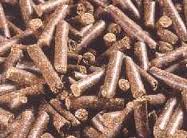Feeds for dairy cows
Feeds for dairy cows
Dairy Articles
When feeding pregnant dairy cows, it’s often easier to create a diet plan for your entire herd rather than each individual cow. That said, dairy cow owners should take several factors into consideration when setting up a diet plan. The age of the cow, stage of lactation, body condition, stage of pregnancy and butterfat yield should be factored into your planning. The dairy cow partitions her food between body reserves and milk production, so if you overfeed her, the surplus will be sent to body reserves. An underfed dairy cow will draw on her body reserves in order to sustain milk production. This can result in the cow losing weight.
Read more: Diet for Bred Cows | eHow.com http://www.ehow.com/about_6696356_diet-bred-cows.html#ixzz1Wm83obON
Ireland's temperate climate and resulting grass production advantage allows the Irish to exploit the competitive advantages associated with grass-based production systems compared with high input systems, says Michael O'Donovan from Teagasc.
It’s a well-know fact that methane given off by farm animals , especially cows and other ruminants, is a huge contributor to greenhouse-gas levels. The digestive bacteria in cows’ rumens, or stomachs, cause them to belch methane, the second-worst heat-trapping emission associated with global warming.
Some authors define “haylage” as “… an alternative when weather conditions are not good enough for drying hay below 14 %...” (Kenney, 2001), “… a feed that is halfway between hay and silage (Saunders Comprehensive Veterinary Dictionary, 2007)” or “… ensiled forages, made up of grass, alfalfa and alfalfa- grass mixes (Wikipedia, 2008)
By Alvaro Garcia, Kenneth Kalscheur, Arnold Hippen, Dairy Science Department, and Rebecca Schafer, Extension educator, South Dakota State University Cooperative Extension Service - Corn grain usually makes up 30 to 35% of the total ration dry matter (DM) of a typical Midwest lactating cow diet.
By Doug Alcock Livestock Officer, Extensive Industries Development, Cooma and published by NSW DPI.
By Rebecca Schafer, livestock Extension educator Alvaro Garcia, Extension dairy specialist - With the high prices of corn, many producers are looking for energy and protein alternatives to replace either all or a portion of the corn they have been feeding.
By Clyde Lane, Jr., Professor Animal Science and published by University of Tennessee in Beef Cattle Time, Are you faced with a short supply of hay for your beef herd this winter? If so, it is time to look at some alternative sources of feed to carry the animals to spring.
By John B. Hall, Extension Animal Scientist, Beef, Virginia Tech.- Without a doubt, Virginia is dry even though some areas have received a little rain. Short term climate predictions are for a dry March – May and possibly early summer. I hope by writing this article, it will act as a rain dance, and by the time you read this, the information will not be needed. However, the way things are shaping up now, its time to make some plans.

